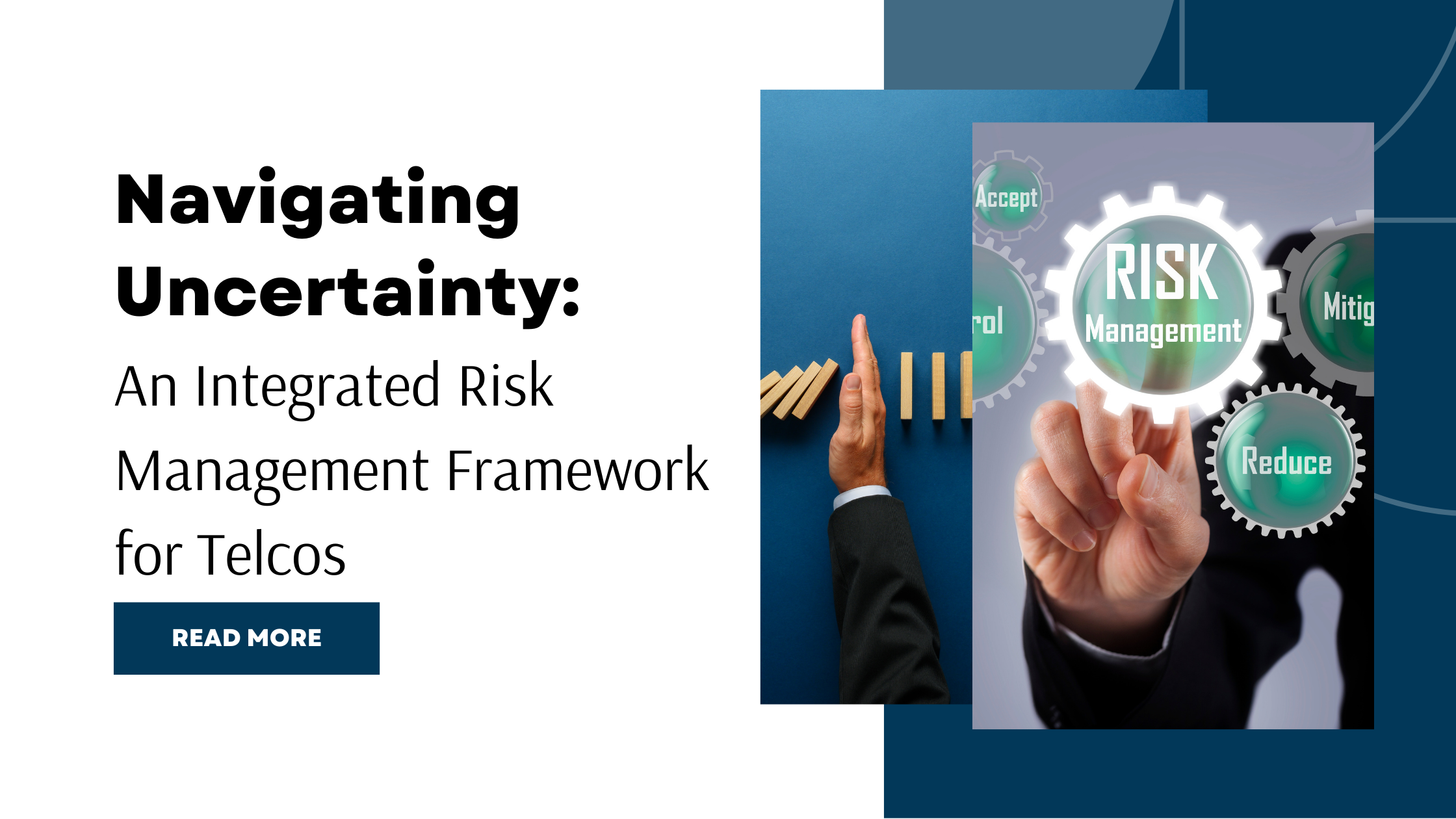The telecom industry thrives on innovation. From the proliferation of mobile devices to the ever-increasing bandwidth demands of 5G, the sector is constantly evolving. But with progress comes complexity, and managing risks in this dynamic landscape is of utmost importance for telcos. This blog post looks into a critical aspect of operational success: an integrated risk management framework for telcos. We’ll explore how effectively managing fraud, revenue assurance, system security, operational risks, profitability, and business continuity empowers telecom companies to navigate the digital age with confidence.
The Elusive Cost of Fraud: Why it Matters to Telcos
Fraud is a persistent issue for telecom companies, eroding profits and undermining customer trust. From SIM swapping scams to international roaming fraud, these activities can inflict significant financial damage. Telecommunications fraud continues to impact companies globally, with a 12% increase in fraud loss reported in 2023 as compared to 2021, equating to an estimated $38.95 billion lost in 2023 [1].
Furthermore, undetected fraud can lead to reputational damage and customer churn. Imagine a scenario where a customer experiences inexplicable charges on their bill – a tell-tale sign of fraudulent activity. If the telco fails to identify and address the issue promptly, customer satisfaction plummets, potentially leading to them switching to a competitor.
Further strategies to reduce customer churn: https://www.tauspace.com/strategies-to-improve-customer-churn-in-telecoms/
Beyond Fraud: A Multifaceted Risk Landscape
Fraud management is undoubtedly a critical concern, but it’s only one piece of the risk puzzle for telcos. Here’s a closer look at some other key risk areas:
- Revenue Assurance: Revenue leakage occurs when legitimate revenue goes uncollected due to billing errors, system inefficiencies, or metre bypass. A robust revenue assurance program identifies and rectifies these issues, safeguarding your bottom line.
- System Security: Cybersecurity threats are a constant source of concern. Data breaches, malware attacks, and network intrusions can disrupt operations, compromise customer data, and incur significant financial and reputational costs.
- Operational Risk Management: Operational risks encompass a wide range of potential disruptions, such as network outages, natural disasters, or human error. These events can significantly impact service delivery, customer satisfaction, and revenue generation.
- Profitability Management: In a competitive market with fluctuating pricing models and evolving technologies, profitability is a key concern. Proper risk management helps identify and mitigate factors that could impact profit margins, allowing for strategic resource allocation and cost control.
- Business Continuity: Unexpected events can disrupt operations, jeopardising service delivery and customer satisfaction. A comprehensive business continuity plan ensures the telco can recover quickly from disruptions and minimise potential damage.
Building Resilience: The Power of an Integrated Risk Management Framework
While each of these risk areas deserves individual attention, a siloed approach can lead to inefficiencies and blind spots. An integrated risk management framework (IRMF) offers a superior solution. An IRMF promotes a holistic view of risk by fostering collaboration between different departments within the organisation. This approach ensures that risks are identified, assessed, and mitigated in a coordinated manner, leveraging valuable synergies and insights.
Here’s how an IRMF strengthens your telco’s risk management position:
- Enhanced Risk Visibility: An IRMF provides a comprehensive view of all relevant risks, allowing for a prioritised approach to mitigation strategies.
- Improved Decision-Making: By considering the interdependencies between different risks, executives can make more informed decisions that address the organisation’s overall risk profile.
- Resource Optimisation: An IRMF facilitates the efficient allocation of resources for risk management activities, eliminating duplication of efforts.
- Effective Communication: The framework fosters collaboration and communication between various departments, ensuring everyone is aligned and aware of potential risks.
- Proactive Risk Mitigation: An IRMF encourages a proactive approach to risk management, enabling the identification and mitigation of risks before they escalate.
Now, implementing a successful risk management framework requires more than just technology. It necessitates a cultural shift. Telcos need to create a risk-aware culture where proactive risk identification and mitigation are prioritised. Ongoing training for employees on risk management best practices empowers them to contribute effectively to risk mitigation strategies.
Conclusion
The dynamic telecom landscape presents constant challenges. However, a robust integrated risk management framework equips telcos to navigate this environment with confidence. By addressing fraud, revenue assurance, system security, operational risks, profitability, and business continuity in a comprehensive and integrated manner, telcos can minimise losses, optimise resources, and ensure long-term success. Embracing this holistic approach allows telecom companies to focus on what matters most: delivering exceptional service to their customers and driving innovation in the ever-evolving digital age.
[1] https://cfca.org/telecommunications-fraud-increased-12-in-2023-equating-to-an-estimated-38-95-billion-lost-to-fraud/#:~:text=Telecommunications%20fraud%20continues%20to%20impact,representing%202.5%25%20of%20telecommunications%20revenues.










Hey there! This is my first visit to your blog!
We are a group of volunteers and starting a new project in a community in the same niche.
Your blog provided us valuable information to work on. You
have done a wonderful job!
I do not even know how I ended up here, but I thought this post was good.
I do not know who you are but definitely you’re going to a
famous blogger if you are not already 😉 Cheers!
Thank you! We’re glad you found the blog insightful. We post weekly, so stay tuned for more!